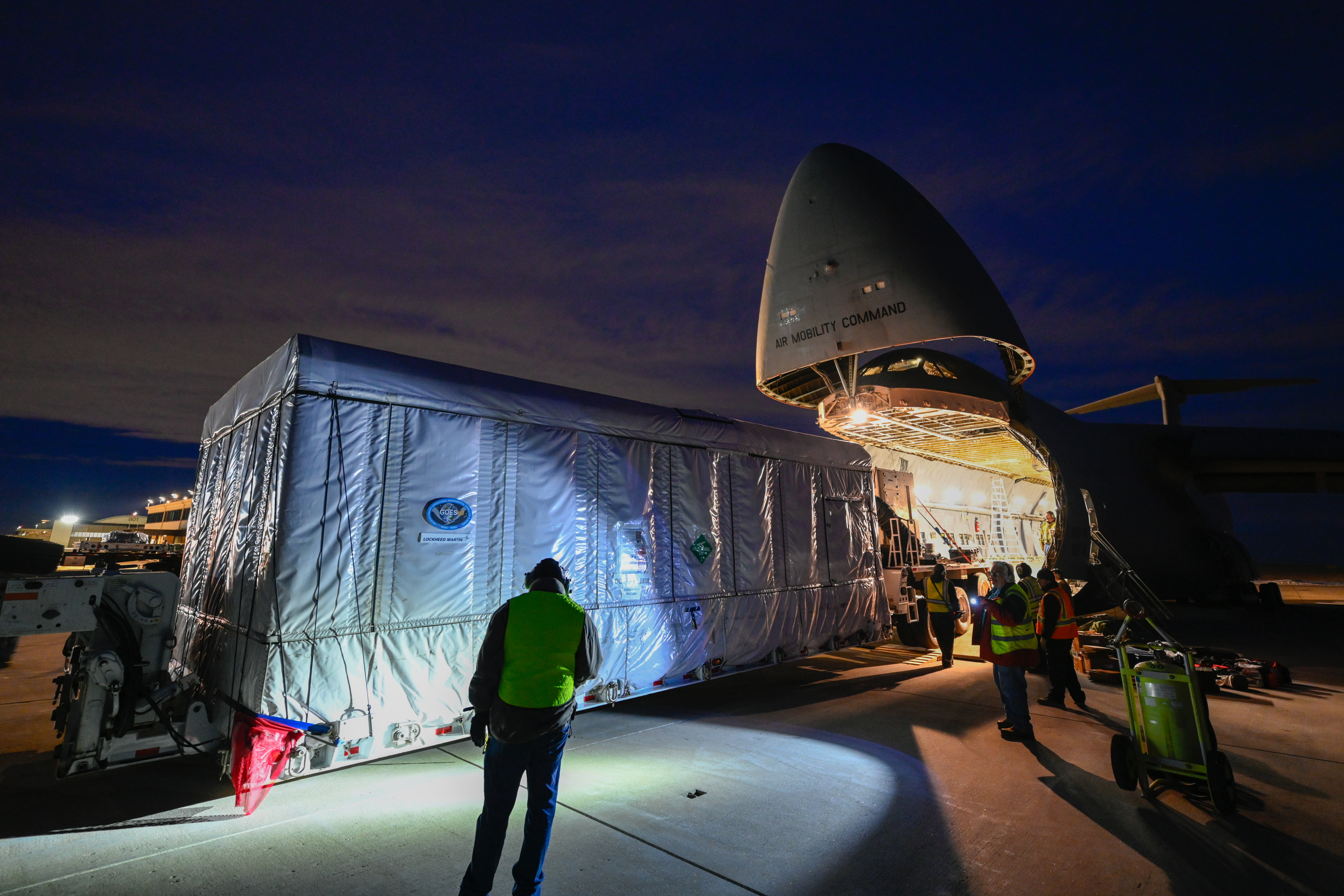Releases

KENNEDY SPACE CENTER, Florida, Jan. 24, 2024 – The next-generation Geostationary Operational Environmental Satellite (GOES)-U has successfully arrived at Kennedy Space Center, Florida, to begin preparing for its spring launch. It is the final of four satellites in the National Oceanic and Atmospheric Administration (NOAA)’s GOES-R weather satellite series, all built by Lockheed Martin [NYSE: LMT] in Littleton, Colorado.
GOES-U will enable the constellation to continue saving lives and property by ensuring forecasters have access to better-than-ever weather data for many years to come. These satellites provide meteorologists in the U.S. and western hemisphere with crystal-clear images of severe storms, hurricanes, wildfires and other weather hazards earlier than ever before.
“As severe weather patterns increase with our changing climate, unparalleled data from these GOES-R satellites help people stay safe,” said Jagdeep Shergill, Geo Weather programs director, Lockheed Martin. “The GOES-R satellites Lockheed Martin has created have revolutionized weather forecasting, and we’re looking forward to seeing how we can continue to support this capability for future NOAA missions.”
Moving a Spacecraft Across the Country
The small school bus-sized GOES-U needed a spacious ride to Florida, so the team looked no further than the trusty, Lockheed Martin-built C-5M Super Galaxy aircraft. To prepare for shipment, the Lockheed Martin team enclosed the spacecraft in a specialized shipping container that functioned as its own miniature cleanroom.
This enclosure protects GOES-U’s suite of seven state-of-the-art space and Earth weather instruments, including a brand new one for GOES-U: a compact coronagraph from the Naval Research Laboratory that will better characterize the Sun’s coronal mass ejections.
The weather satellite was first transported from the company’s Littleton facility to Buckley Space Force Base in Aurora, Colorado, where it was carefully loaded onto the C-5 for transit.
Upon its arrival at Kennedy Space Center in Florida Jan. 23, teams then transported GOES-U to Astrotech Space Operations in Titusville, Florida – also a Lockheed Martin company. For the next several months, engineers there will ready the spacecraft for its launch, conducting activities like final testing, checkouts and encapsulation in its rocket fairing.
GOES-U is baselined for launch starting in April 2024.
What’s Next after GOES-R?
NOAA’s current GOES-R satellites revolutionized weather forecasting, with the first one transmitting more data in its first six months of operation than all previous GOES satellites combined.
The program has brought significant benefits to North America and the global weather community by producing high-quality imagery that supports preparedness, climate monitoring, ecosystems management, agriculture, commerce and transportation. But what’s on the horizon after the GOES-R series?
NOAA’s next flagship weather program – called the Geostationary Extended Observations (GeoXO) satellite system – will expand these already robust weather observation capabilities. Its technology will be designed to address further challenges faced by humankind, like increased severe weather, emerging environmental issues and rising ocean temperatures driven by a rapidly changing climate.
Lockheed Martin was selected in 2022 for two concept studies focusing on the spacecraft bus and lightning mapper development under the GeoXO program.
More about the Mission
The GOES-R Series is a collaborative acquisition and development effort between NOAA and the National Aeronautics and Space Administration (NASA) to develop, launch and operate weather satellites. NOAA manages all GOES satellites and distributes their data to users worldwide, while NASA oversees the acquisition of the spacecraft and instruments, in addition to the management of the launch through NASA’s Launch Services Program.
In addition to building all four satellites in the GOES-R series, Lockheed Martin also produced two of the primary instruments aboard: the Geostationary Lightning Mapper and Solar Ultraviolet Imager. Once GOES-U completes an on-orbit checkout of its instruments, systems, and data products, NOAA plans to put GOES-19 into service as GOES East, replacing GOES-16. It will complete the group of GOES-R satellites in space: GOES-16 (currently GOES East), GOES-18 (GOES West) and GOES-17 (on-orbit spare).
Check out additional GOES-U imagery here and b-roll here.
About Lockheed Martin
Headquartered in Bethesda, Maryland, Lockheed Martin Corporation is a global security and aerospace company that employs approximately 116,000 people worldwide and is principally engaged in the research, design, development, manufacture, integration and sustainment of advanced technology systems, products and services.
Please follow @LMNews on X for the latest announcements and news across the corporation, and @LMSpace to learn more about the latest technologies, missions and people driving the future of space.

